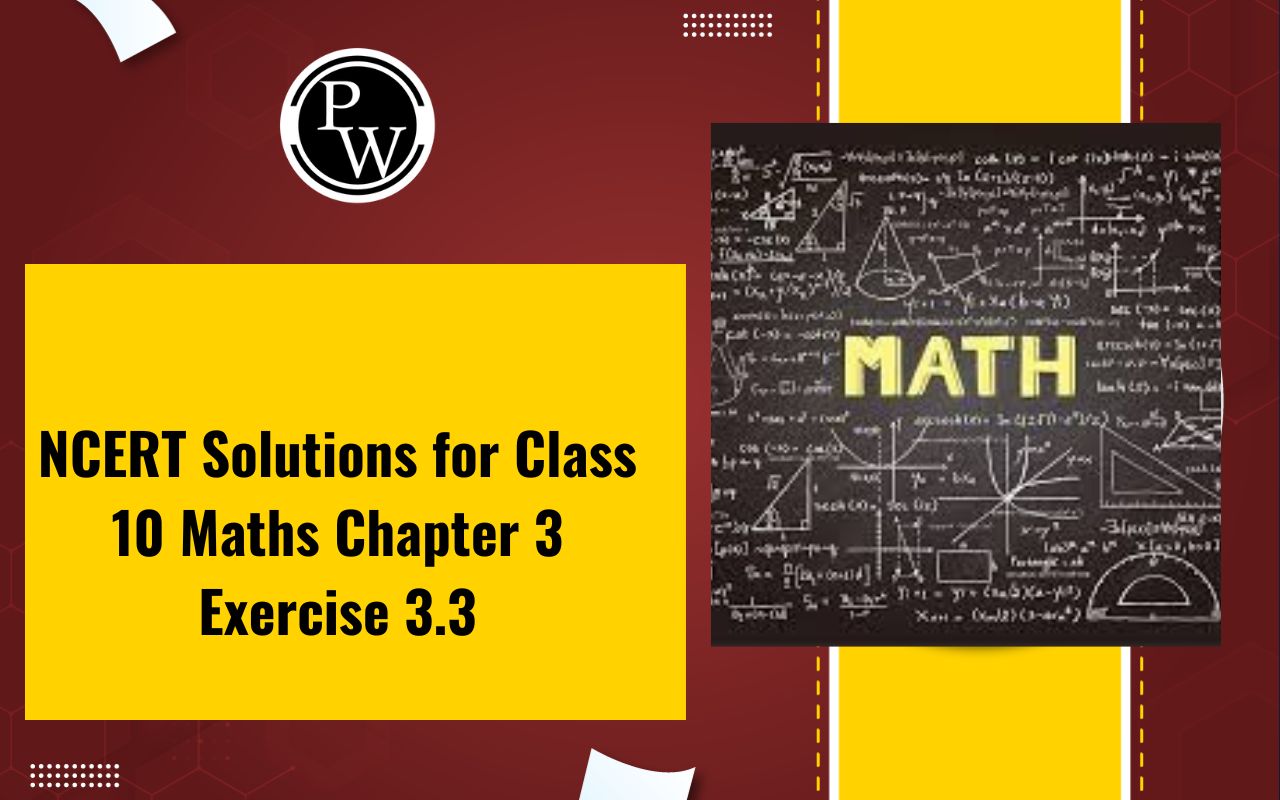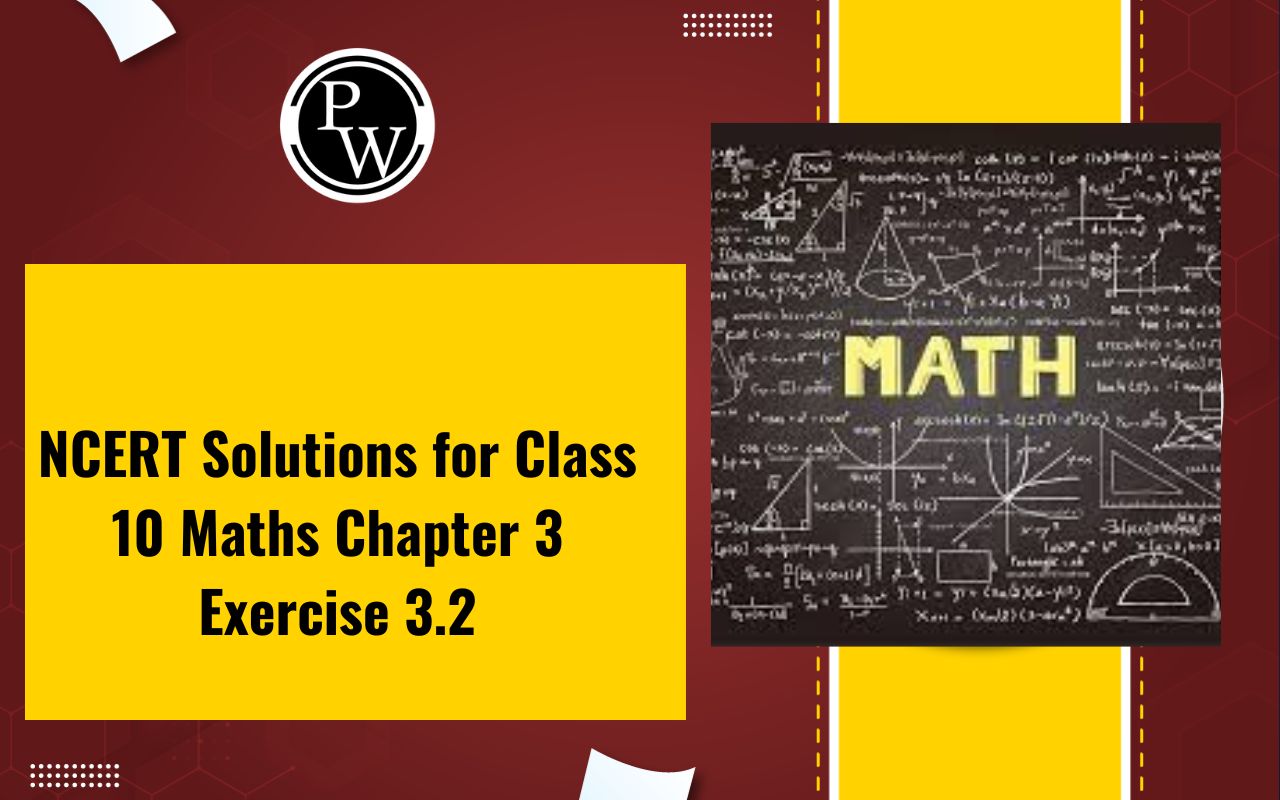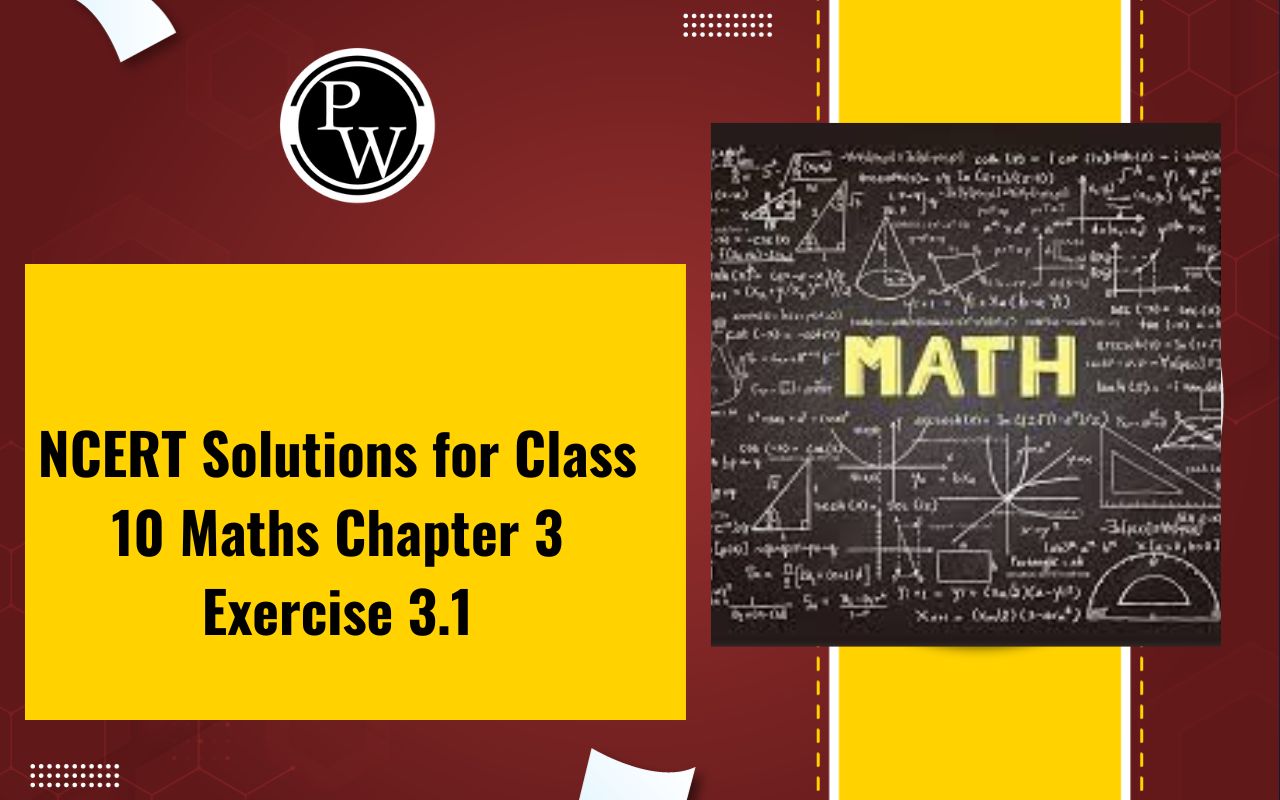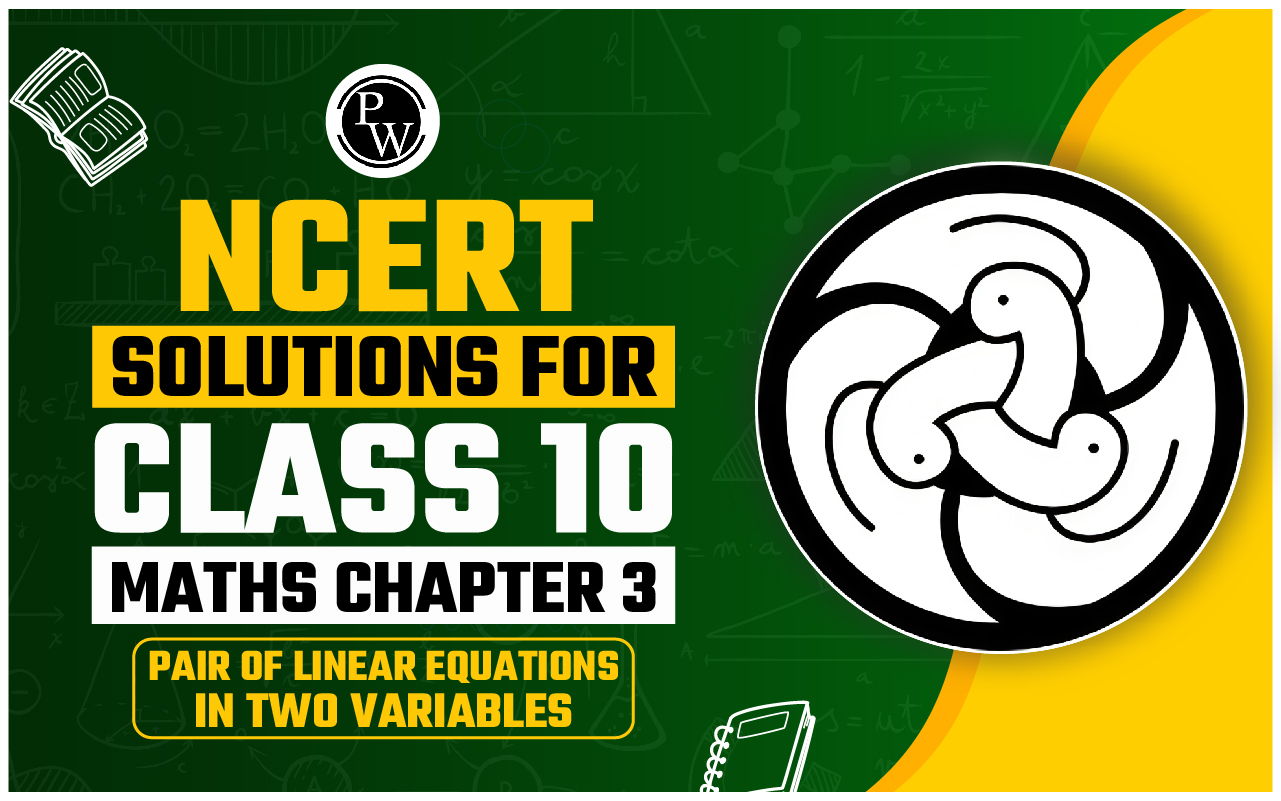

NCERT Solutions for Class 10 Maths Chapter 6 Exercise 6.2: NCERT Solutions for Class 10 Maths Chapter 6 Exercise 6.2 focus on applying the Basic Proportionality Theorem (BPT), also known as Thales’ Theorem, to solve geometric problems. This exercise introduces students to the concept of dividing triangles proportionally when a line parallel to one side intersects the other two sides.
The solutions emphasize the step-by-step application of this theorem, enabling students to solve problems related to proportionality in triangles effectively. These solutions are aligned with NCERT guidelines, helping students develop logical reasoning, strengthen their understanding of triangles, and enhance problem-solving skills. It is an essential topic for exams and higher studies.Important Questions for Class 10 Maths Chapter 6
NCERT Solutions for Class 10 Maths Chapter 6 Exercise 6.2 Overview
NCERT Solutions for Class 10 Maths Chapter 6 Exercise 6.2 PDF
NCERT Solutions for Class 10 Maths Chapter 6 Exercise 6.2 on Triangles focus on the application of the Basic Proportionality Theorem (BPT) to solve problems involving proportional division in triangles. These solutions offer step-by-step explanations, ensuring clarity and ease of understanding. To assist you further in mastering this important concept, we have provided a detailed PDF below. This resource is designed to help you excel in exams and enhance your geometry skills.NCERT Solutions for Class 10 Maths Chapter 6 Exercise 6.2 PDF
NCERT Solutions for Class 10 Maths Chapter 6 Exercise 6.2 Triangles
Below is the NCERT Solutions for Class 10 Maths Chapter 6 Exercise 6.2 Triangles -1. In figure. (i) and (ii), DE || BC. Find EC in (i) and AD in (ii).

Solution:
(i) Given, in △ ABC, DE∥BC ∴ AD/DB = AE/EC [Using Basic proportionality theorem] ⇒1.5/3 = 1/EC ⇒EC = 3/1.5 EC = 3×10/15 = 2 cm Hence, EC = 2 cm. (ii) Given, in △ ABC, DE∥BC ∴ AD/DB = AE/EC [Using Basic proportionality theorem] ⇒ AD/7.2 = 1.8 / 5.4 ⇒ AD = 1.8 ×7.2/5.4 = (18/10)×(72/10)×(10/54) = 24/10 ⇒ AD = 2.4 Hence, AD = 2.4 cm.2. E and F are points on the sides PQ and PR respectively of a ΔPQR. For each of the following cases, state whether EF || QR. (i) PE = 3.9 cm, EQ = 3 cm, PF = 3.6 cm and FR = 2.4 cm
(ii) PE = 4 cm, QE = 4.5 cm, PF = 8 cm and RF = 9 cm (iii) PQ = 1.28 cm, PR = 2.56 cm, PE = 0.18 cm and PF = 0.63 cm
Solution:
Given, in ΔPQR, E and F are two points on side PQ and PR respectively. See the figure below; (i) Given, PE = 3.9 cm, EQ = 3 cm, PF = 3.6 cm and FR = 2,4 cm
Therefore, by using Basic proportionality theorem, we get,
PE/EQ = 3.9/3 = 39/30 = 13/10 = 1.3
And PF/FR = 3.6/2.4 = 36/24 = 3/2 = 1.5
So, we get, PE/EQ ≠ PF/FR
Hence, EF is not parallel to QR.
(ii) Given, PE = 4 cm, QE = 4.5 cm, PF = 8cm and RF = 9cm
Therefore, by using Basic proportionality theorem, we get,
PE/QE = 4/4.5 = 40/45 = 8/9
And, PF/RF = 8/9
So, we get here,
PE/QE = PF/RF
Hence, EF is parallel to QR.
(iii) Given, PQ = 1.28 cm, PR = 2.56 cm, PE = 0.18 cm and PF = 0.36 cm
From the figure,
EQ = PQ – PE = 1.28 – 0.18 = 1.10 cm
And, FR = PR – PF = 2.56 – 0.36 = 2.20 cm
So, PE/EQ = 0.18/1.10 = 18/110 = 9/55
…………. (i)
And, PE/FR = 0.36/2.20 = 36/220 = 9/55
………… (ii)
So, we get here,
PE/EQ = PF/FR
Hence, EF is parallel to QR.
(i) Given, PE = 3.9 cm, EQ = 3 cm, PF = 3.6 cm and FR = 2,4 cm
Therefore, by using Basic proportionality theorem, we get,
PE/EQ = 3.9/3 = 39/30 = 13/10 = 1.3
And PF/FR = 3.6/2.4 = 36/24 = 3/2 = 1.5
So, we get, PE/EQ ≠ PF/FR
Hence, EF is not parallel to QR.
(ii) Given, PE = 4 cm, QE = 4.5 cm, PF = 8cm and RF = 9cm
Therefore, by using Basic proportionality theorem, we get,
PE/QE = 4/4.5 = 40/45 = 8/9
And, PF/RF = 8/9
So, we get here,
PE/QE = PF/RF
Hence, EF is parallel to QR.
(iii) Given, PQ = 1.28 cm, PR = 2.56 cm, PE = 0.18 cm and PF = 0.36 cm
From the figure,
EQ = PQ – PE = 1.28 – 0.18 = 1.10 cm
And, FR = PR – PF = 2.56 – 0.36 = 2.20 cm
So, PE/EQ = 0.18/1.10 = 18/110 = 9/55
…………. (i)
And, PE/FR = 0.36/2.20 = 36/220 = 9/55
………… (ii)
So, we get here,
PE/EQ = PF/FR
Hence, EF is parallel to QR.
3. In the figure, if LM || CB and LN || CD, prove that AM/AB = AN/AD

Solution:
In the given figure, we can see, LM || CB, By using basic proportionality theorem, we get, AM/AB = AL/AC ……………………..(i) Similarly, given, LN || CD and using basic proportionality theorem, ∴AN/AD = AL/AC ……………………………(ii) From equation (i) and (ii) , we get, AM/AB = AN/AD Hence, proved.4. In the figure, DE||AC and DF||AE. Prove that BF/FE = BE/EC

Solution:
In ΔABC, given as, DE || AC Thus, by using Basic Proportionality Theorem, we get, ∴BD/DA = BE/EC ……………………………………………… (i) In ΔBAE, given as, DF || AE Thus, by using Basic Proportionality Theorem, we get, ∴BD/DA = BF/FE ……………………………………………… (ii) From equation (i) and (ii) , we get BE/EC = BF/FE Hence, proved.5. In the figure, DE||OQ and DF||OR, show that EF||QR.

Solution:
Given, In ΔPQO, DE || OQ So by using Basic Proportionality Theorem, PD/DO = PE/EQ……………… ..(i) Again given, in ΔPOR, DF || OR, So by using Basic Proportionality Theorem, PD/DO = PF/FR………………… (ii) From equation (i) and (ii) , we get, PE/EQ = PF/FR Therefore, by converse of Basic Proportionality Theorem, EF || QR, in ΔPQR.6. In the figure, A, B and C are points on OP, OQ and OR respectively such that AB || PQ and AC || PR. Show that BC || QR.

Solution:
Given here, In ΔOPQ, AB || PQ By using Basic Proportionality Theorem, OA/AP = OB/BQ……………. (i) Also given, In ΔOPR, AC || PR By using Basic Proportionality Theorem ∴ OA/AP = OC/CR……………(ii) From equation (i) and (ii) , we get, OB/BQ = OC/CR Therefore, by converse of Basic Proportionality Theorem, In ΔOQR, BC || QR.7. Using Basic proportionality theorem, prove that a line drawn through the mid-points of one side of a triangle parallel to another side bisects the third side. (Recall that you have proved it in Class IX).

Solution:
Given, in ΔABC, D is the midpoint of AB such that AD=DB. A line parallel to BC intersects AC at E as shown in above figure such that DE || BC. We have to prove that E is the mid point of AC. Since, D is the mid-point of AB. ∴ AD=DB ⇒AD/DB = 1 …………………………. (i) In ΔABC, DE || BC, By using Basic Proportionality Theorem, Therefore, AD/DB = AE/EC From equation (i), we can write, ⇒ 1 = AE/EC ∴ AE = EC Hence, proved, E is the midpoint of AC.8. Using Converse of basic proportionality theorem, prove that the line joining the mid-points of any two sides of a triangle is parallel to the third side. (Recall that you have done it in Class IX).
Solution:
Given, in ΔABC, D and E are the mid points of AB and AC respectively, such that, AD=BD and AE=EC. We have to prove that: DE || BC.
Since, D is the midpoint of AB
∴ AD=DB
⇒AD/BD = 1………………………………..
(i)
We have to prove that: DE || BC.
Since, D is the midpoint of AB
∴ AD=DB
⇒AD/BD = 1………………………………..
(i)
Also given, E is the mid-point of AC. ∴ AE=EC ⇒ AE/EC = 1 From equation (i) and (ii) , we get, AD/BD = AE/EC By converse of Basic Proportionality Theorem, DE || BC Hence, proved.
9. ABCD is a trapezium in which AB || DC and its diagonals intersect each other at the point O. Show that AO/BO = CO/DO.
Solution:
Given, ABCD is a trapezium where AB || DC and diagonals AC and BD intersect each other at O. We have to prove, AO/BO = CO/DO
From the point O, draw a line EO touching AD at E, in such a way that,
EO || DC || AB
In ΔADC, we have OE || DC
Therefore, By using Basic Proportionality Theorem
AE/ED = AO/CO
……………..(i)
Now, In ΔABD, OE || AB
Therefore, By using Basic Proportionality Theorem
DE/EA = DO/BO
…………….(ii)
From equation
(i)
and
(ii)
, we get,
AO/CO = BO/DO
⇒AO/BO = CO/DO
Hence, proved.
We have to prove, AO/BO = CO/DO
From the point O, draw a line EO touching AD at E, in such a way that,
EO || DC || AB
In ΔADC, we have OE || DC
Therefore, By using Basic Proportionality Theorem
AE/ED = AO/CO
……………..(i)
Now, In ΔABD, OE || AB
Therefore, By using Basic Proportionality Theorem
DE/EA = DO/BO
…………….(ii)
From equation
(i)
and
(ii)
, we get,
AO/CO = BO/DO
⇒AO/BO = CO/DO
Hence, proved.
10. The diagonals of a quadrilateral ABCD intersect each other at the point O such that AO/BO = CO/DO. Show that ABCD is a trapezium.
Solution:
Given, Quadrilateral ABCD where AC and BD intersects each other at O such that, AO/BO = CO/DO. We have to prove here, ABCD is a trapezium
From the point O, draw a line EO touching AD at E, in such a way that,
EO || DC || AB
In ΔDAB, EO || AB
Therefore, By using Basic Proportionality Theorem
DE/EA = DO/OB ……………………(i)
Also, given,
AO/BO = CO/DO
⇒ AO/CO = BO/DO
⇒ CO/AO = DO/BO
⇒DO/OB = CO/AO
…………………………..(ii)
From equation
(i)
and
(ii)
, we get
DE/EA = CO/AO
Therefore, By using converse of Basic Proportionality Theorem,
EO || DC also EO || AB
⇒ AB || DC.
Hence, quadrilateral ABCD is a trapezium with AB || CD.
We have to prove here, ABCD is a trapezium
From the point O, draw a line EO touching AD at E, in such a way that,
EO || DC || AB
In ΔDAB, EO || AB
Therefore, By using Basic Proportionality Theorem
DE/EA = DO/OB ……………………(i)
Also, given,
AO/BO = CO/DO
⇒ AO/CO = BO/DO
⇒ CO/AO = DO/BO
⇒DO/OB = CO/AO
…………………………..(ii)
From equation
(i)
and
(ii)
, we get
DE/EA = CO/AO
Therefore, By using converse of Basic Proportionality Theorem,
EO || DC also EO || AB
⇒ AB || DC.
Hence, quadrilateral ABCD is a trapezium with AB || CD.
Benefits of Using NCERT Solutions for Class 10 Maths Chapter 6 Exercise 6.2
Mastery of the Basic Proportionality Theorem (BPT):
This exercise focuses on the application of BPT, also known as Thales' Theorem, a fundamental concept in geometry. The solutions provide a clear understanding of how parallel lines divide triangles proportionally, helping students solve complex geometric problems.Step-by-Step Problem Solving:
Each solution is explained in a structured manner, breaking down complex problems into manageable steps. This approach makes it easier for students to follow and understand the reasoning behind each step.Strengthens Conceptual Understanding:
Practicing these solutions helps students build a strong foundation in triangle properties and proportionality, which are essential for advanced topics in geometry, trigonometry, and mensuration.Exam-Focused Preparation:
These solutions are designed as per the NCERT syllabus and exam pattern, ensuring students are well-prepared to tackle similar questions in their board exams with accuracy and confidence.Enhances Logical Reasoning and Analytical Skills:
By working through the problems, students develop the ability to analyze geometric relationships, draw logical conclusions, and solve problems systematically, skills that are crucial for academic success and beyond.NCERT Solutions for Class 10 Maths Chapter 6 Exercise 6.2 FAQs
What are the basic concepts of triangles?
What are triangles known for?
What is the basic rule of a triangle?
How are triangles used in real life?












